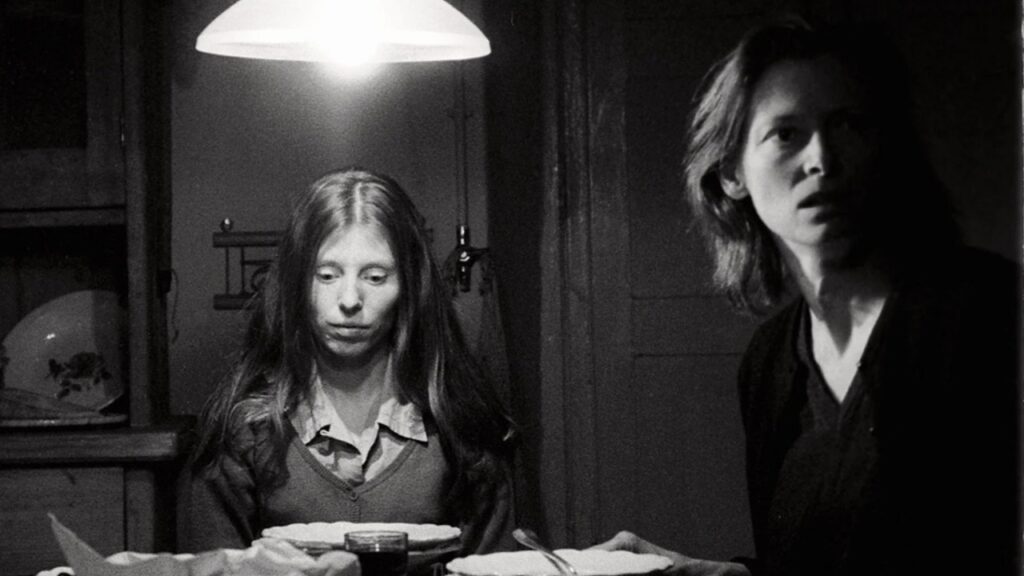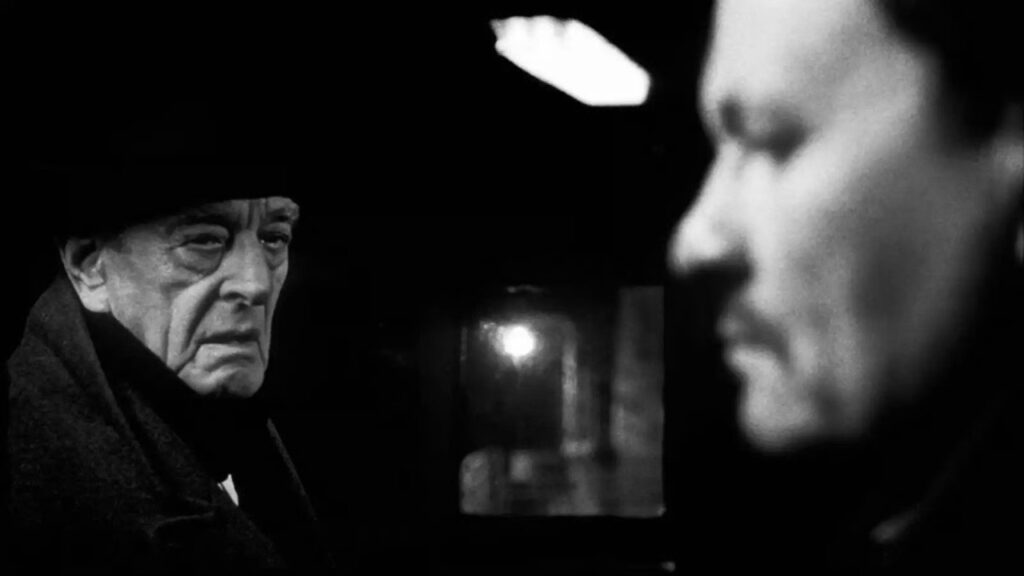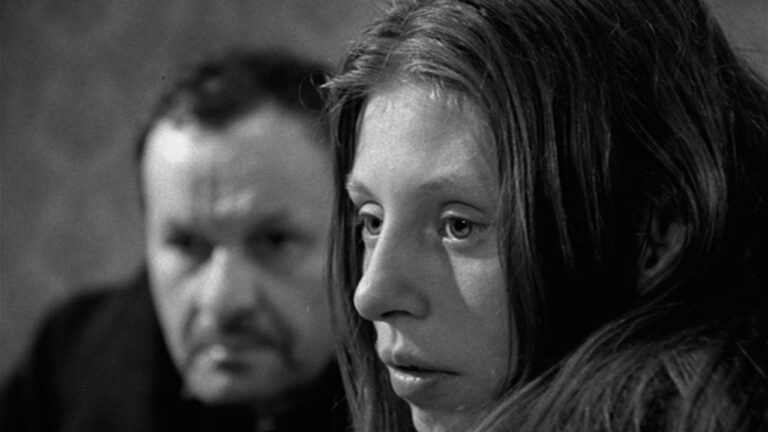When we look at ‘The Man from London‘ (2007), directed by Béla Tarr and Ágnes Hranitzky, we see a film that moves at the pace of human hesitation itself. Adapted from Georges Simenon’s 1934 novel L’Homme de Londres, it stands apart from most thrillers we are used to. It was shot as a Hungarian–French–German co-production, bringing together an international cast that includes Miroslav Krobot, Tilda Swinton, and János Derzsi. Tarr, known for his patience and his focus on everyday struggles, offers us a story that looks not at action, but at the quiet unease that follows it.
The film follows Maloin, a railway worker stationed in a small port town. His life, like the town itself, feels worn and gray. One night, from the high window of his signal tower, he witnesses something strange on the docks. Two men argue; one falls into the water, and a briefcase drops in with him. Maloin climbs down and retrieves it, discovering that it is full of English banknotes. He says nothing, hides the money, and goes back to his life. But from that moment on, everything changes in small, uneasy ways. His silence begins to shape his days, and we see the weight of guilt settling on him even though he has done nothing violent himself.
Everyday life meets moral danger in The Man from London

At home, Maloin’s wife, played by Tilda Swinton, senses that something is wrong but cannot name it. Their daughter Henriette, played by Erika Bók, becomes part of this tension when Maloin suddenly buys her an expensive fur stole she neither asked for nor wants. He cannot explain why, and his wife’s confusion grows into anger. When a stranger named Brown (János Derzsi) starts watching him from the street below, Maloin realizes the world he has entered cannot be undone.
Soon, Inspector Morrison (István Lénárt), the “man from London,” arrives to investigate a missing sum of money. What follows is not a chase, but a slow unraveling of conscience. By the time Maloin confesses to killing Brown, the act feels less like violence and more like an exhausted surrender to everything that has been pressing on him.
Behind the camera, Tarr’s path was no easier. The film’s French producer, Humbert Balsan took his own life just before filming began, causing the entire production to fall apart. Legal disputes, lost financing, and delays followed, and the cast and crew waited over a year before shooting could continue. For a film that deals with endurance and despair, the making of it mirrored those same ideas in reality. When it was finally completed with a revised budget of about €4.3 million, it premiered at Cannes in 2007, though it did not win any awards.
Guilt and Temptation Shape Every Moment

The film’s images speak more than its words. Shot by Fred Kelemen, the camera lingers on fog, reflections on wet stone, and faces caught between shadow and light. Every movement feels deliberate, as if we are meant to notice the smallest sound. The music by Mihály Vig adds a faint unease that follows Maloin wherever he goes. We are not asked to be thrilled; we are asked to stay still long enough to see how guilt looks when it takes over an ordinary life.
Critics were divided, as we might expect. Some admired the film’s precision and mood, while others found it slow and distant. Variety’s Derek Elley wrote that Tarr’s work would never bridge the divide between those who see him as a genius and those who see him as dull. But even if the reactions were mixed, the film remains striking in its honesty. It shows us how people can live beside wrongdoing without the comfort of clear answers.
Critic Martha P. Nochimson later described the film as a study of how ordinary people encounter moral collapse without even realizing it. According to her, Tarr focuses less on the crime itself and more on the world around it, because that is where we truly live. The man from London, she said, stands for the distant idea of justice, something abstract that barely touches the people who live within the quiet, repetitive routines of life.
When we watch The Man from London, we do not see heroes or villains. We see hesitation, weariness, and the small ways people lose their sense of right and wrong. Tarr does not tell us how to feel, and maybe that is why the film lingers. It is a story about temptation, fear, and the ordinary face of guilt. After all, what haunts Maloin could happen to any of us. The sudden chance to take what isn’t ours, followed by the long silence that asks what kind of person we really are.





I don’t think I have ever read an article based on Bêla Tarr’s any movie. Went through your work, you have intensively covered his famous works, kudos